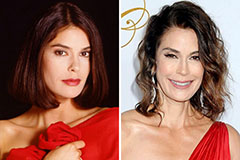Every individual creates a complex tapestry of being. These elements fuse, reflecting our histories and influences. From heritage, to relationships, each strand contributes to the richness and complexity of who we are. Some aspects are vibrant, while others are more subtle. Yet, it is in the harmonious blend of these factors that our true identity unfolds.
Apparel's Evolution
From the practical garments of ancient civilizations to the avant-garde designs of today, fashion has constantly transformed. Each era mirrors the social, cultural, and technological advancements of its time.
Early societies utilized fabrics like hide and cotton for both comfort. As civilizations developed, so too did the artistry here and complexity of garments.
The rise of empires brought with it a boom in fashion, with intricate beadwork becoming indicators of wealth and status. The Renaissance saw a reinvention of classical styles, while the Age of Reason favored simpler, more rational attire.
Over the centuries, innovations in textile production and design have steadily shaped the landscape of fashion. The Industrial Revolution ushered in mass production, making clothing widely available.
Draping Dreams: The Art of Dressmaking
Crafting garments isn't merely sewing fabric together; it's an art form where imagination takes flight. The dressmaker, a modern-day maestro, transforms mere textiles into wearable expressions. With skilled hands and a keen eye for detail, they sculpt fabric, yielding to its every crease as if it were clay in their grasp.
Each stitch is a deliberate stroke contributing to the final creation's allure. From the initial blueprint to the perfect moment, every step is imbued with dedication.
The dressmaker embraces the task of crafting a garment that not only enhances the wearer's form but also embodies their style. A dress, after all, is more than just cloth; it's a expression woven into existence.
Through the magic of draping dreams, dressmakers create garments that are both beautiful and significant.
A Canvas of Cloth
Clothing is more than just fabric to cover our bodies; it's a powerful tool for self-expression. Each garment we choose to wear reveals something about who we are, regardless consciously or subconsciously. Our wardrobe becomes a visual narrative, a canvas on which we paint our identity.
- Vibrant hues can showcase confidence and energy, while subtle tones may convey peace.
- Traditional cuts often indicate a sense of elegance, while more avant-garde designs can highlight individuality and creativity.
- Jewelry like belts, scarves, and hats add the final touches to our looks, allowing us to further customize our self-expression.
Ultimately, fashion is a deeply personal experience. It's about discovering what makes us feel confident, and using our collection to reflect the world we see.
Delving into the Fabric: The Cultural Significance of Dress
Garments embody more than just sheer coverings. They interlace a rich tapestry of cultural significations. From the vibrant hues to the intricate details, dress conveys stories about beliefs. A formal outfit can instantly reveal one's group and status within society.
- Dress functions as a powerful tool for assertion, allowing individuals to showcase their style.
- Additionally, the act of dressing itself can be a ritualistic practice, reinforcing cultural expectations.
Fashion Trends: From Catwalk to Closet
Fashion trends are a fascinating phenomenon that constantly transform. What we see on the runway often infiltrates our everyday lives, influencing how we dress and express ourselves. A bold design can spark global attention, defining the course for upcoming seasons. From classic silhouettes to earthy color palettes, these trends reflect the cultural zeitgeist of the time.
Ultimately, fashion trends are more than just outfits; they are a powerful medium that transmits ideas, values, and even desires.
 Alana "Honey Boo Boo" Thompson Then & Now!
Alana "Honey Boo Boo" Thompson Then & Now! Devin Ratray Then & Now!
Devin Ratray Then & Now! Barbi Benton Then & Now!
Barbi Benton Then & Now! Teri Hatcher Then & Now!
Teri Hatcher Then & Now! Stephen Hawking Then & Now!
Stephen Hawking Then & Now!